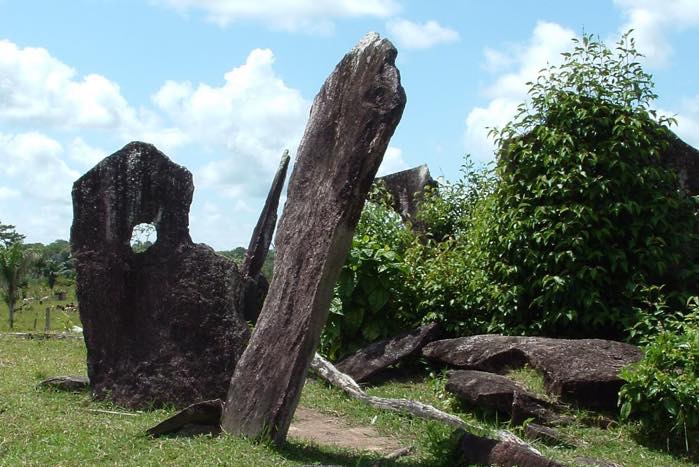Every bit of evidence that points to great civilizations in the Americas contradicts a fundamental justification for European claims to the new lands, terra nullius, or “nobody’s land.” You can’t steal property that has no owner.
First contact proved deadly to the inhabitants of the so-called “new world,” if not by warfare then by disease. The Spanish and Portuguese crisscrossed what is now called Latin America looking for gold and in their travels those expeditions killed Indians the explorers never even saw.
It took very little time for tropical rainforests and jungles to reclaim clearings made by humans. The evidence of American Indian civilizations hid itself from settlers who had no incentive to discover the truth of the matter.
The two greatest rivers in this hemisphere are the Mississippi in North America and the Amazon in South America, and it was in those watersheds where the rich soil and ample water enabled Indians to produce agricultural surplus and support divisions of labor and the artisans that practice in cities. Just as people did on the greatest rivers in Europe.
The settlers multiplied on the lands they claimed were empty. Wealthy Europeans considered wheat bread and beef to be the food of the well-to-do and, as they became prosperous, settlers in the urban areas of the Americas created a rising demand for wheat and beef. In North America, the demand was met when iron plows broke the soil of the Great Plains.
The first impact on South America was in the pampas of Argentina and Uruguay but consumers prosperous enough to demand what the pampas provided easily continued to run up prices. When almost 300,000 acres of the pampas were under cultivation, the ranchers turned to destroying the rainforest.
In our time, the rainforests of South America are being burned on a grand scale to service new markets for beef in Russia and China. Indigenous farmers used the slash and burn method, but on a very small scale that kept the land in rotation before the soil could dry out. Cattle ranching, on the other hand, is said to destroy 200 square feet of rainforest for every pound of beef produced, but that rainforest is not on rotation—it is gone.

Courtesy Rachel Kramer/National Wildlife Federation
Historically, expansion of cattle pastures has driven deforestation in the Brazilian Amazon, where these pastures cover about two-thirds of all the deforested land. As the rainforests are destroyed by things like cattle ranching, buried sites like Amazon rainforest geoglyphs are being discovered.
Climate scientists decry the burning of rainforests in the Amazon watershed to create grazing for cattle because the rainforest takes carbon out of the atmosphere and cattle ranching puts it in. Biologists bemoan the loss of habitat for many species.
Proving not all science is set back by the burning of rainforests, archaeologists have been working on a trove of data uncovered by stripping the forest away.
Archaeoastronomy scholars have found a sophisticated observatory buried in the Brazilian jungle at a side in Brazil called Rego Grande. This would be the kind of equipment produced by a civilization that can afford to support scientists.
Rego Grande adds to fortified settlements connected by road networks that could not be seen under the forest canopy. These findings contribute to resolving disputes about the pre-Columbian population of the Americas and about the complexity of the civilizations that we can only discover by uncovering their ruins.
Recently, Prof. Jennifer Watling, an archaeologist at the University of São Paulo in Brazil, and nine colleagues from Brazil and the U.K., published still more evidence of indigenous civilization that had been swallowed by the rainforest.
Destruction of the rainforest uncovered an extensive and previously little known complex of man-made geometric earthworks, dubbed by the scientists “geoglyphs.” The Amazon Rainforest geoglyphs appear to have been built about 2,000 years ago. The study dated human agriculture in the area to 4,000 years ago, with land cleared on rotation for palm, cedar, and Brazil nuts.
Painstaking and microscopic analysis of debris around the Amazon Rainforest geoglyphs created a 6,000 year environmental history of the geoglyph sites, Watling and her colleagues were able to demonstrate that the indigenous people had developed sustainable agricultural practices for the rainforest long before Europeans began wanton destruction of those same rainforests in the service of raising cattle.
How extensive the Amazon Rainforest geoglyph sites will be remains to be seen, but they are one more modern data point that is already extensive enough to put another nail in the coffin of terra nullius.
© 2017 Indian Country Today Media Network, all rights reserved. https://indiancountrymedianetwork.com
